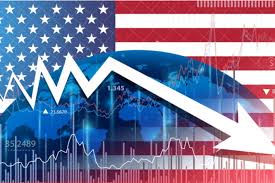MarketWatch
The numbers: The U.S. economy grew at a soft 1.1% annual pace in the first three months of this year, as declining business investment offset strong consumer spending and pointed to slowing growth.
Wall Street analysts had forecast a 2% increase in gross domestic product, the official scorecard for the economy.
Consumer spending, the main engine of U.S. growth, drove the economy forward in the first quarter. Outlays jumped at a 3.7% clip, the government said Thursday, the biggest increase in almost two years.
Households got little help from businesses, however, and probably can’t expect much in the near future. Companies cut investment and reduced production, shaving 2.3 percentage points off headline GDP.
Rising interest rates and stress in the banking system have hurt business investment while softening sales has forced some companies to lay off workers.
Many economists believe the combination of rising interest rates and still-high inflation will plunge the U.S. into a recession later this year.
“The US economy is unwell, and it’s starting to show,” said chief economist Gregory Daco of EY Parthenon.
Key details: Supported by rising incomes, households boosted spending on durable goods — products meant to last a long time — by a whopping 17% annual pace. Much of the increase reflected a surge in auto sales.
Spending on services such as travel, recreation and health care grew at a modest 2.3% pace.
Businesses were more cautious. They increased spending on structures such as oil rigs and plants, but cut back on equipment. The result was a small 0.4% decline in business fixed investment.
Housing was another sore spot. Higher mortgage rates have choked off sales and construction and caused investment in new housing to fall for eight quarters in a row.
Yet the biggest drag on GDP was from declining levels of inventories or unsold products. The growth in inventories shrank by a whopping $138 billion, the sharpest reversal in two years.
Had inventory levels remained neutral, GDP would have expanded at a frothy 3.4% rate in the first quarter.
Still, weaker inventory growth could be a bad omen for the economy. Higher consumer spending accounted for some of the decline, but companies have also cut production in anticipation of slower sales.
Government spending, meanwhile, rose for the third quarter in a row and also contributed sharply to the increase in first-quarter GDP.
The U.S. trade deficit was little changed in the quarter and had little affect on GDP. Last year the yo-yoing trade deficit caused big swings in GDP.
Inflation rose at an annual 4.2% pace in the first quarter, compared to a 3.7% increase in the 2022 fourth quarter.
Stubbornly high inflation has pushed the Federal Reserve to dramatically raise U.S. interest rates to try to slow the economy, a strategy that also raises the risk of recession. Higher borrowing costs reduce consumer and business spending.
The Fed is widely expected to raise its policy interest rate at least one more time this year, most likely next week, according to Wall Street bettors.
GDP is updated twice after the initial results are published to incorporate new information not immediately available. The next update for the first quarter is due a month from now.
Big picture: The economy is still expanding, but it’s stuck between high inflation and rising interest rates.
What’s keeping the U.S. out of recession is steady consumer spending.
Americans are enjoying the strongest jobs market and lowest unemployment rate in decades. And that’s raised incomes and allowed them to buy enough goods and services to stave off a big increase layoffs and resulting downward spiral in the economy.
Most economists don’t think the situation can last, however, if households turn more cautious, sales get weaker and businesses cut more costs by eliminating jobs.
Looking ahead: “As higher interest rates and tighter bank lending standards cut the availability of credit for businesses, we expect employment growth to stall and economic growth to turn negative as the economy enters recession [in the second half] of 2023,” said Nationwide Chief Economist Kathy Bostjancic.














